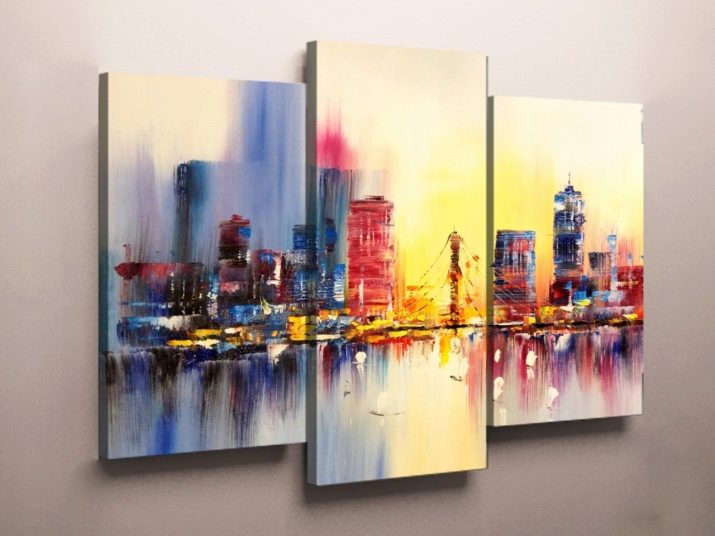Features of modular paintings by numbers

One picture on the wall looks lonely. Modular compositions look more holistic and can fill all the free space of the wall, organically woven into the overall interior.
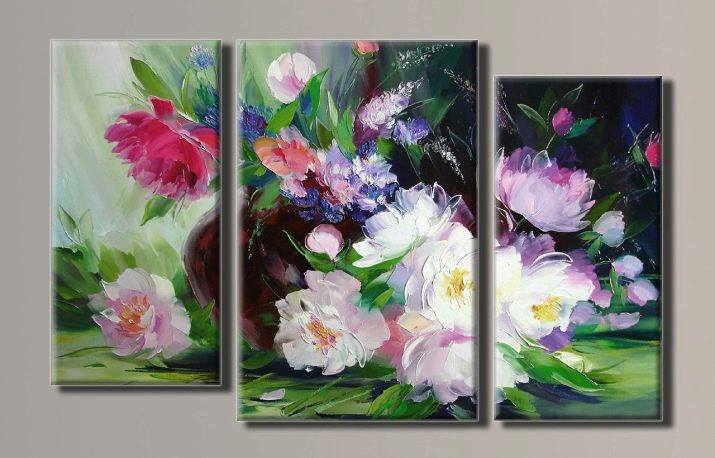
Peculiarities
Modular paintings by numbers differ from the usual ones in that they have a more elongated appearance and consist of several canvases combined into a single composition. They can be of the same size or different, for example, the central canvas is the largest, and the side ones are slightly smaller. Pictures with displacement look interesting.
Otherwise, these are the same pictures by numbers. The image is divided into numbered segments. Initially, the picture is not visible, as the outlines and numbers merge. As you paint, a whole image is formed.
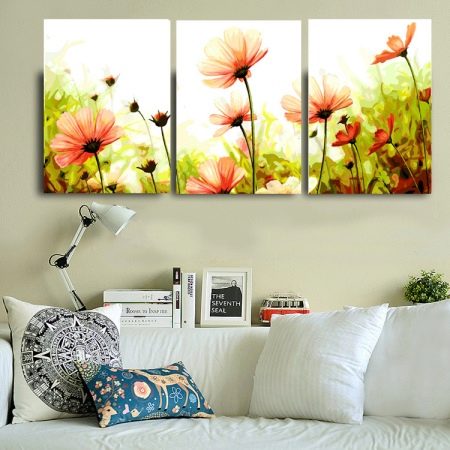
Acrylic paints do not fade in the sun, so modular paintings can be a great option for decorating walls.
Thanks to the general composition of several canvases, the paintings look like a single object and take up enough free space so that the wall does not seem "bare".
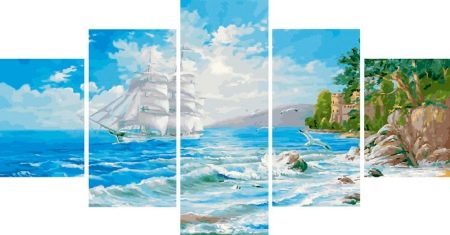
Varieties
Pictures by numbers can be conditionally divided by the material of the canvas and its quantity in the set. The more components, the more expensive the set.
By the number of canvases, they are distinguished:
- diptychs - two parts of one image or two canvases that complement each other, not necessarily of the same size;

- triptychs - three canvases, united by meaning, can be of the same size, with a prominent larger central part and even with an offset;
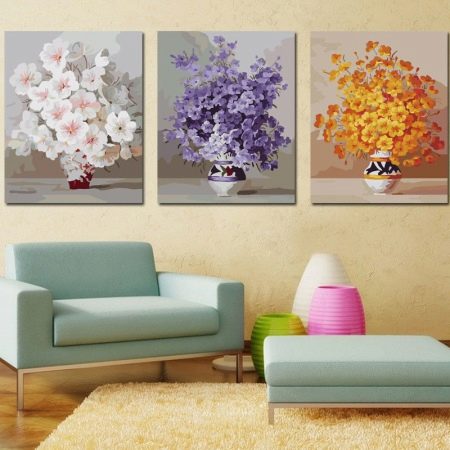
- polyptychs - the composition consists of 4 parts or more, most often there are modular sets of 4-5 canvases combined into a single image.
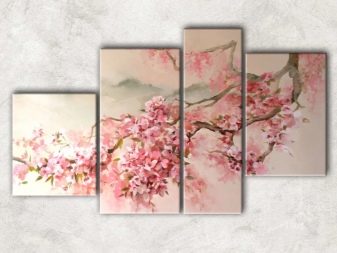
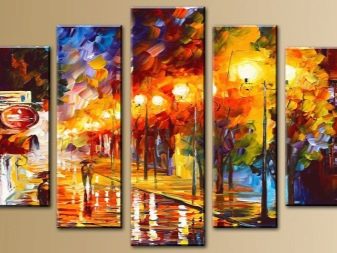
Further, the sets can be divided according to the material of the canvas. Usually a primed canvas or cardboard is used.More expensive sets already come with a stretcher or canvas on cardboard. It is much more convenient, you do not have to stretch the canvas yourself and buy a stretcher separately.
Cardboard is smoother thanks to its special coating, so it is easier to paint. Recommended for children and beginners. There is also a colored canvas. The numbered sectors are filled with a lighter shade of the base color. This will reduce the risk of confusion with the paint, it is easier to paint over.
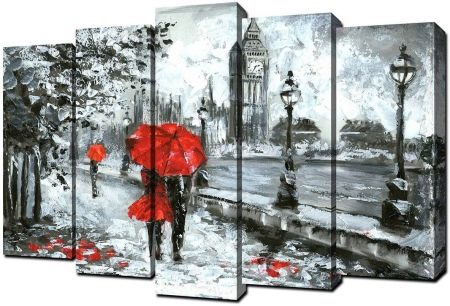
The main set of kits for coloring modular paintings consists of:
- bases for painting (canvases), divided into numbered sectors;
- paints;
- brushes;
- checklist.
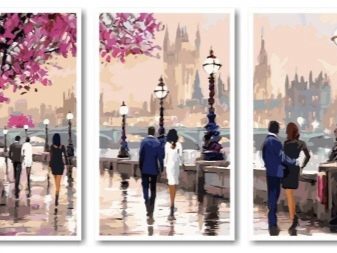
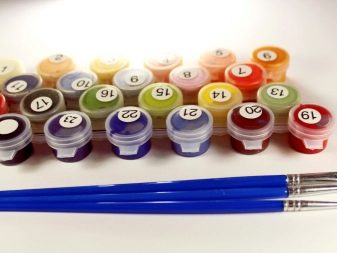
The number of colors in a set depends on the complexity of the drawing and its volume. They can be in jars, tubes, or vacuum bags. It is more convenient to use paints in jars, but they dry quickly if the lid is not tightly closed. In tubes, paint is stored better, is used more economically, but skill is required to squeeze out the required amount of paint.
Each jar is assigned a number, the area of which must be painted over on the canvas. Sometimes there are fewer acrylic paints in a set. There are basic colors, the rest are obtained by independently mixing different colors. The instructions are usually attached, the set may also include a palette.
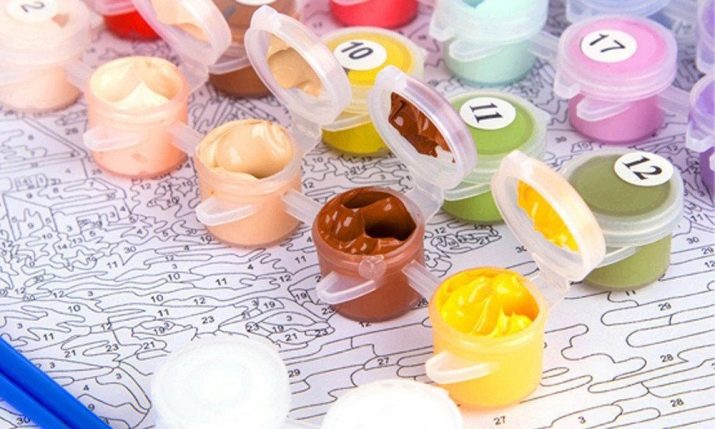
The set always contains a synthetic brush. If the picture is complex, then several at once: a thin one - for drawing small sectors, a medium round one - for basic work and a large flat brush - for large areas and applying transparent varnish.
- A synthetic brush is most suitable for acrylic paints and does not at all indicate the manufacturer's greed.
- Bristle brushes are too hard, more suitable for oil paints.
- Squirrels and ponies are too soft, absorb a lot of water, ideal for watercolor painting.

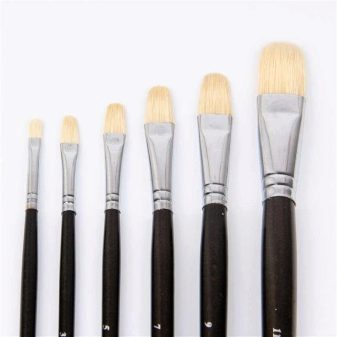
The contact sheet duplicates the image on the canvas. It is necessary to check the correct color number if it happened to accidentally go beyond the outline on the main canvas. In addition, you can practice on the sheet or try out paint from a jar.
The basic set can be supplemented with clear varnish, picture mounts, additional brushes, a color copy of the drawing and other components. This increases the comfort of the artist, but also increases the cost of the set.
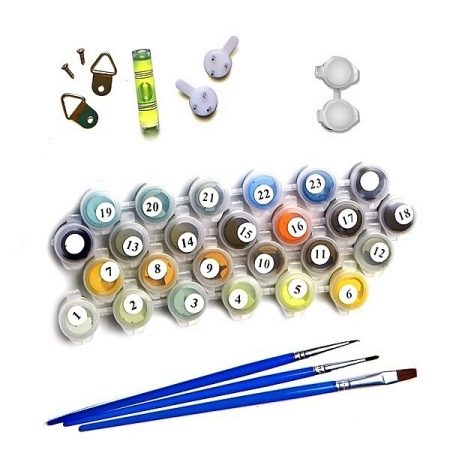
Nuances of choice
When choosing, you should rely not only on the picture and its size, but also on the level of complexity. The latter depends on the number of segments to be painted. The finer the details, the more difficult it is to draw them.
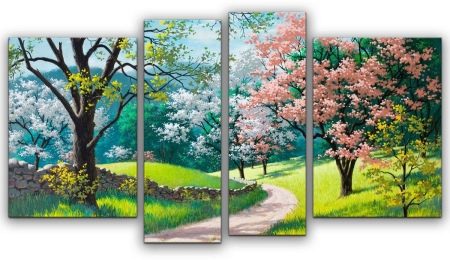
There are 5 difficulty levels.
- 1 - the simplest, for children, contains 2-3 colors, large fragments.
- 2 - also large sectors, but already contains up to 5 colors, often these are images in the style of pop art or abstraction.
- 3 is the average and most common. There can be from 5 to 20 colors in a set. The image is detailed enough to draw full-fledged pictures, but the sectors are not very small. Schoolchildren and beginners do an excellent job with this level of difficulty.
- 4 is the optimal level of difficulty. The diagram is closer to the original image.
- 5 is the hardest. An abundance of small details, there are not only colors, but also various options for their shades (up to 45 pieces). As close as possible to the original image, such as a famous painting or photograph.
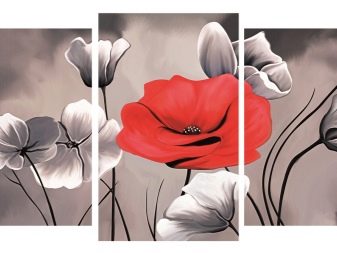
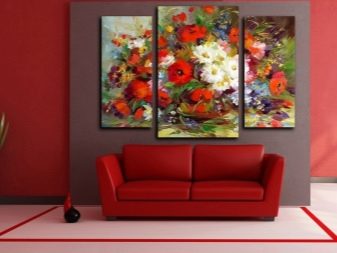
The image can be in vertical or horizontal orientation. When choosing, this should also be taken into account.
Drawing tips
It is better to start drawing a picture from the far corner: for right-handers - from the upper left, for left-handers - vice versa. Or draw the background first, gradually moving towards the center. This will eliminate the risk of smearing the wet layer. If the paint is too runny and runs down the canvas, blot it with a tissue or toilet paper.
If an error occurs and the sector is painted with the wrong color, you must wait until the paint is dry. Then, in several layers, apply the desired color over the old layer. Therefore, the masters recommend first painting over the light sectors, then brighter and darker ones, in order to avoid mistakes and violation of the sector boundaries. It is easier to overlap with a darker color.

You can also paint from larger to smaller. First, all large areas are painted over, then small areas are drawn, and vice versa. In order not to often wet the brush and not change colors, you can first paint over all sectors under one number, then under another. This method is not very convenient, since it takes time to find the necessary fragments, especially when there are many of them. Therefore, it is better to limit the area to be painted over.
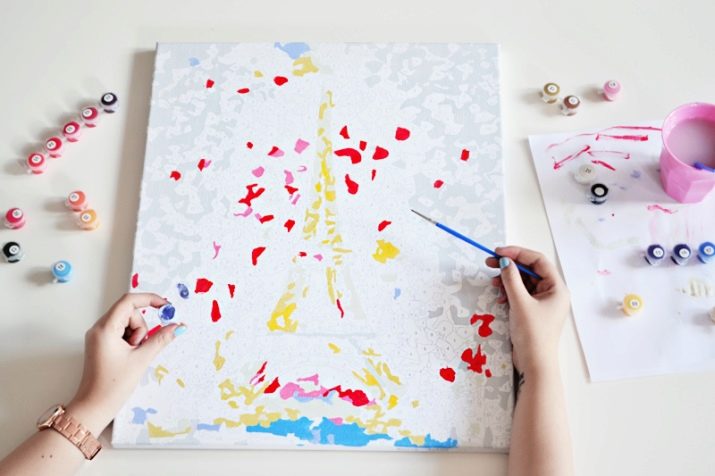
Sometimes paints need to be allowed to dry. Some layers can be reapplied to add brightness or texture. You should not try to paint a picture at once in one day or evening. Despite the seeming simplicity, this is a rather complex and filigree work that requires accuracy and care.
